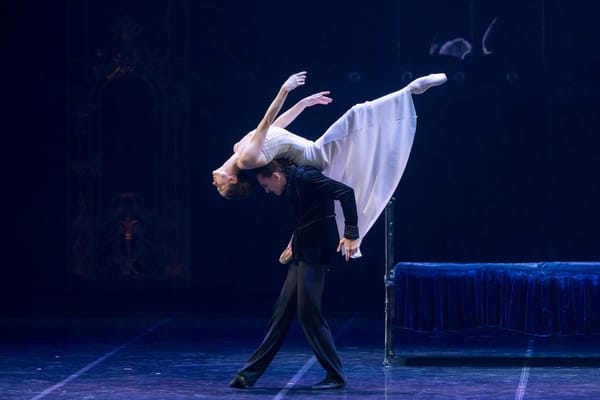How to Appreciate 12-Tone Serialism – A Guide for the Curious Listener
Often misunderstood or dismissed as academic, 12-tone serialism remains one of the most radical innovations in Western classical music. This guide introduces its principles and helps listeners unlock its unique beauty and expressive power.

For much of classical music’s history, composers relied on tonality—a system of hierarchical pitch relationships centred around a ‘home’ key. From the luminous order of Bach to the emotional expansiveness of Mahler, tonal music flourished for centuries. But in the early 20th century, that framework began to break down. Out of the collapse of Romanticism’s tonal excess emerged a strikingly new idea: 12-tone serialism, also known as dodecaphony.
Invented by the Austrian composer Arnold Schoenberg in the 1920s and expanded by his pupils Anton Webern and Alban Berg, 12-tone serialism revolutionised musical composition by rejecting traditional key centres and replacing them with a strict organisational principle. For many listeners, it can be a challenging sound-world: dissonant, elusive, often cerebral. Yet behind its seeming impenetrability lies a powerful logic, expressive depth, and aesthetic purity. This article aims to offer tools and context for appreciating 12-tone serialism as both an intellectual structure and a moving musical experience.
What Is 12-Tone Serialism?
At the heart of 12-tone music lies the tone row, a sequence that includes all twelve pitches of the chromatic scale, arranged in a specific order without repetition. Once a composer creates a tone row, it serves as the basis for an entire composition. Unlike tonal music, where certain notes (like the tonic or dominant) are given prominence, all twelve tones in serialism are considered equal.

This equality of pitches was Schoenberg’s response to what he saw as the ‘exhaustion’ of traditional harmony. By removing the gravitational pull of tonality, he sought to give music a new logic, one built on order and coherence rather than consonance and resolution.

Importantly, the tone row can be manipulated in four main ways:
- Prime (P): the original order.
- Retrograde (R): the row in reverse.
- Inversion (I): intervals flipped in direction (an ascending major third becomes a descending major third).
- Retrograde Inversion (RI): the inverted row in reverse.

These transformations can also be transposed to start on any pitch, creating 48 total permutations. Composers weave these permutations into the musical fabric, developing motives, harmonies, and even rhythms from the row’s internal logic.
Debunking the Myth of Emotionlessness
One of the most common criticisms of 12-tone serialism is that it is ‘cold’ or devoid of emotional content. This prejudice often arises from unfamiliarity. Just as one might struggle to appreciate the harmonic subtlety of late Beethoven without some listening experience, serialist works demand attentiveness and open ears.
Indeed, composers like Berg and Webern demonstrated that serialism could be richly expressive. Berg’s Violin Concerto, written in memory of Manon Gropius, merges the 12-tone technique with poignant lyricism, even incorporating a Bach chorale. Webern’s miniatures, such as his Five Movements for String Quartet, offer fragile beauty in their compressed, jewel-like structure.
Rather than suppressing feeling, 12-tone music often heightens it by intensifying ambiguity, tension, and surprise. The absence of tonal resolution means that every moment is unstable—charged with possibility. In that sense, serialism mirrors the anxieties and fractured consciousness of the 20th century.
How to Listen: A Guide for First Encounters
If you’re new to 12-tone serialism, the key is to adjust your expectations. Don’t listen for melodies that resolve neatly or harmonies that follow familiar patterns. Instead, focus on texture, intervallic relationships, timbre, and structural design. Here are a few steps to help:
- Start with Berg or later Schoenberg
Berg’s Lyric Suite or Violin Concerto combines 12-tone technique with Romantic gestures. Similarly, Schoenberg’s Suite for Piano Op. 25 retains dance forms, making the abstraction more accessible.
- Listen multiple times
Serial music reveals itself slowly. Repeated listening helps the ear become acquainted with the tone row and its permutations, eventually allowing recognition of recurring shapes and gestures. - Read the score, if possible
Following the score, especially for shorter works, can illuminate how the composer manipulates the tone row. Many pieces are highly architectural. - Focus on a single row
Try identifying the tone row and tracing its appearances. For instance, in Schoenberg’s Piano Suite, the row is presented at the start and serves as the thematic material throughout.
- Explore Webern’s miniatures
Their brevity makes them perfect for concentrated listening. Webern’s works are often described as “pointillistic,” with each note or gesture isolated and finely wrought.
Key Works and Composers
Arnold Schoenberg (1874–1951)
- Suite for Piano, Op. 25 – the first fully serial piece
- Variations for Orchestra, Op. 31 – a powerful large-scale orchestral work
Alban Berg (1885–1935)
- Lyric Suite – a deeply expressive chamber work
- Violin Concerto – combines serialism with folk songs and tonal allusions
Anton Webern (1883–1945)
- Symphony, Op. 21 – a crystalline structure of extreme economy
- Six Bagatelles for String Quartet, Op. 9 – a masterclass in expressive compression
Later Developments
The 12-tone method influenced a generation of composers:
- Pierre Boulez, Luigi Nono, and Karlheinz Stockhausen extended serialism into rhythm, dynamics, and articulation (a method called total serialism).
- Milton Babbitt in the US brought mathematical rigour to serial procedures, while others like Luciano Berio explored its limits through quotation and collage.
Serialism gradually lost its dominance by the late 20th century, but its impact—both technical and philosophical—remains profound. Composers such as Harrison Birtwistle and Brian Ferneyhough continue to draw on its structural ambitions.
The Historical and Cultural Context
To fully appreciate 12-tone serialism, one must consider its historical context. Emerging after the First World War and amid the collapse of Austro-German Romanticism, the movement sought to reinvent the foundations of musical thought. Schoenberg famously called his method a way to ensure the "supremacy of German music" following Wagner and Mahler—though irony would have it that his music was soon labelled “degenerate” by the Nazis, forcing him to flee to America.
In exile, serialism became part of a broader post-war intellectual project. Especially in Europe, the systematic order of serialism was seen as a necessary antidote to the ideological chaos that had led to fascism and war. Its rigour symbolised a kind of ethical cleansing—a way of starting again.
But this sense of mission also led to its dogmatisation. In mid-20th century conservatories and festivals (notably Darmstadt), serialism sometimes became a rigid orthodoxy, alienating performers and audiences alike. As postmodernism took hold, composers began to reintroduce chance, tonality, and playfulness. Yet even these shifts often retained an undercurrent of serialist logic.
Final Thoughts
It’s worth acknowledging that many listeners resist 12-tone music at first. Its sound can feel unfamiliar, even aggressive. But that resistance is part of the journey. Just as abstract painting or modernist literature requires a recalibration of taste, so too does serial music demand a new kind of listening—more analytical, more open, less reliant on emotional tropes.





